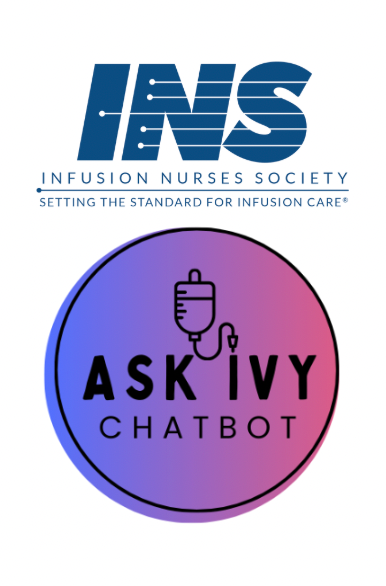What rate is best to 'keep vein open' to maintain PIVC patency?
The purpose of slow continuous infusion to keep vein open (KVO) is similar to intermittent flushing. Rinsing the peripheral intravenous catheter (PIVC) (with 0.9% sodium chloride) is thought to maintain catheter patency by preventing internal luminal (inner surface) occlusion. This theoretically reduces the formation of blood clots, bacterial biofilm, drug precipitate (interactions between incompatible fluids/medicines), and reduces the risk of occlusion.1
The Infusion Nurses Society1 indicates that a standard infusion rate, a so-called one size fits all, cannot be determined and needs to consider the age of the patient, fluid and electrolyte balance, and the presence of comorbidities.
If a patient requires only an intermittent infusion of medication (but not hydration), an intravenous solution is infused at a slow rate (5-20 mL/hr depending on the patient) between medication doses to keep both the catheter and vein 'open' and functional.
Preclinical bioengineering studies have demonstrated the importance of flow and pressure (shear force) on the blood components and vein. Researchers have shown that low pressures within the vein (i.e., during low blood flow or stasis) can induce adhesion of white blood cells (WBCs) to the vein endothelium and then platelet activation promoting inflammation, coagulation, and catheter failure.2 A KVO Infusion may reduce areas of stasis and risk of coagulation.
Recent lab research3 into the optimum KVO infusion rate for PIVCs demonstrated that a low flow rate was associated with areas of blood resistance around the PIVC tip, creating a recirculation zone that may actually promote clots near PIVC tip. An infusion rate nearer that of the blood flow rate in the cannulated vessel was associated with less resistance, reduced stasis, and lower risk of coagulation.
The highlights3 of this research are as follows:
- Optimum TKVO rate for PIVC is unknown.
- Computer models simulated saline infusion through a 20-gauge PIVC in 2 veins.
- Low rates (10 mL/h) may not clear the PIVC tip and keep the device patent.
- Increase to >20 mL/h is effective, but 30-40 mL/h appears most effective.
- Additional fluid load must be considered based on the needs of each patient.
However, note that the evidence is generated mathematically and therefore, should be interpreted with caution (not tested in humans).
Conversely, other research has demonstrated the impact of excessive forces of the vessel endothelium.4 This suggests that intermediate shear forces (24 dynes/cm2) represent a sweet spot for injection (bolus) and infusion.
Recent findings from a small RCT in Iran showed no significant difference, but the study's limitations warrant cautious interpretation5. Similarly, a Canadian study in the pediatric population reported no notable difference6. An older Cochrane Review favored intermittent flush, but the certainty of evidence is limited7.
Given the absence of evidence and the frequent use, it is important to ensure that KVO is used properly in the context of a medical prescription or an organizational protocol.
Last Updated on: 07/03/2024
Take home message
There is currently no specific guiding principle for choosing between intermittent flush and KVO Infusion. From research to date, it seems that excessively low and high shearing forces contribute to platelet and/or endothelial activation.
It may be that a combination of steady KVO infusion and gentle intermittent flushing is the best way to safely keep PIVCs working.
References
1. Nickel, B. (2024). Infusion Therapy Standards of Practice, 9th Edition. J Infus Nurs, 47(1S), S1-S285. https://doi.org/10.1097/NAN.0000000000000532
2. Ploppa A, Schmidt V, Hientz A, Reutershan J, Haeberle HA, & Nohe B. Mechanisms of leukocyte distribution during sepsis: an experimental study on the interdependence of cell activation, shear stress and endothelial injury. Crit Care 2010;14(6):R201. doi: 10.1186/cc9322.
3. Doyle B, Kelsey L, Carr PJ, Bulmer A, Keogh S. Determining an Appropriate To-Keep-Vein-Open (TKVO) Infusion Rate for Peripheral Intravenous Catheter Usage. Journal of the Association for Vascular Access. 2021;26(2):13-20.
https://meridian.allenpress.com/java/article-abstract/26/2/13/467366/Determining-an-Appropriate-To-Keep-Vein-Open-TKVO?redirectedFrom=fulltext
4. Piper R, Carr PJ, Kelsey LJ, Bulmer AC, Keogh S, & Doyle B. The mechanistic causes of peripheral intravenous catheter failure based on a parametric computational study. Sci Rep 2018;8(1):3441. doi: 10.1038/s41598-018-21617-1.
5. Hosseini SJ, Eidy F, Kianmehr M, Firouzian AA, Hajiabadi F, Marhamati M, Firooz M. Comparing the Effects of Pulsatile and Continuous Flushing on Time and Type of Peripheral Intravenous Catheters Patency: A Randomized Clinical Trial. J Caring Sci. 2021 May 24;10(2):84-88. https://doi.org/10.34172%2Fjcs.2021.016
6. Yeung F, Miller MT, Ojha R, McKelvie B, Poonai N, Brock DE, Cameron S, Taheri S. Canada Saline-Lock Versus Continuous Infusion: Maintaining Peripheral Intravenous Catheter Access in Children. HOSPITAL PEDIATRICS Volume 10, Issue 12, December 2020
7. Flint A, McIntosh D, Davies MW. Continuous infusion versus intermittent flushing to prevent loss of function of peripheral intravenous catheters used for drug administration in newborn infants. Cochrane Database Syst Rev. 2005 Oct 19 (4):CD004593. https://doi.org/10.1002/14651858.cd004593.pub2









